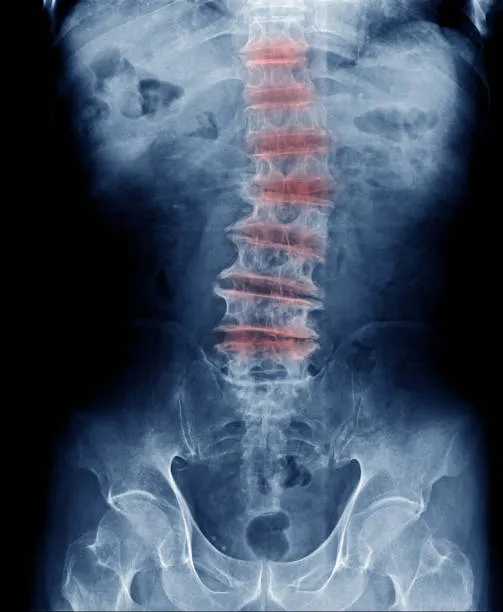Multilple level degenerative disc disease, also known as “Madd” is a condition that causes intense lower back and leg pain. While it doesn’t often cause permanent damage, Madd can be debilitating and even lead to early arthritis.
In fact, research suggests that 30% of Americans will suffer from this painful condition at some point in their lives. This means there are likely a lot of people who don’t realize they have the disease until it’s too late. Fortunately, there are ways to identify and treat this disease before the problems become serious.
The first sign you may notice of Madd is muscle weakness. If you begin noticing this symptom, you should consult your doctor immediately. Muscle weakness can indicate a problem with the spinal cord or nerves.
Identify the 5 Signs of Multilevel Degenerative Disc Disease
If you have lower back pain, then it’s likely that your doctor will want to perform an MRI scan to determine whether you suffer from any sort of injury. This is a very important test because it can reveal the source of the problem. If you’re suffering from chronic lower back pain, however, it might be worth considering seeing a chiropractor.
When you visit a chiropractor, he or she may take x-rays to examine the bones in your spine. Then, the practitioner can identify problems with the discs and vertebrae.
You should also consider visiting a chiropractic clinic if you notice any of the following symptoms:
• You feel like you’re constantly moving forward but end up falling backward
• Your legs are numb or weak
• You lose control of your bowels or bladder
• You experience severe headaches
Chiropractors use their hands to manipulate the muscles, joints, and ligaments of your body. The goal is to restore balance to your spine.
Understand the Symptoms of Multilevel Degenerative Disc Disease
Multiple-level degenerative disc disease (Mild) is a type of spinal disorder that causes pain in the lower back, neck, arms, legs, buttocks, etc. This condition usually develops gradually, but sometimes it happens suddenly. The cause of this problem is the gradual loss of the discs between the vertebrae in your spine.
There are three main types of MILD:
1. Single Level – If you have one level of degeneration, then you will be able to walk without any problems. However, you might still feel some discomfort.
2. Two Levels – You should start to notice the first signs of trouble when you begin to lose motion in your hips and knees. At this point, you may need surgery to repair the damage.
3. Three or More Levels – When you reach this stage, you’ll likely experience severe pain that limits your ability to move. In addition, you could suffer from nerve compression. There are different types of treatments for this kind of problem, including medication, physical therapy, injections, or surgery.
Diagnose Multilevel Degenerative Disc Disease
If you have been diagnosed with a multilevel degenerative disease, then you know that this condition will eventually cause you pain. However, the good news is that there are ways to help prevent this from happening. If you want to learn more about how you can treat your back problem, then keep reading below.
You need to make sure that you take care of yourself. This means that you should exercise regularly and eat right. You shouldn’t smoke or drink alcohol. In addition, you also need to sleep well at night.
It’s important to understand that the best way to deal with your back problems is by getting treatment early on. So, if you suspect that you might be suffering from an injury, then it’s a good idea to visit your doctor immediately. He or she can give you advice on what to do next.
In some cases, you may need surgery. But you don’t have to worry about this. There are many different treatments available today.
Treat Multilevel Degenerative Disc Disease
Multilevel degenerative disc disease is a condition that involves the discs between vertebrae. This type of damage can be caused by many different things, but most people who have this problem don’t realize how serious their situation really is. If you want to know more about the multilevel degenerative disease, then keep reading.
If your back pain gets worse over time, you might suspect that you’re suffering from a spinal injury. However, it’s possible to get other problems, such as arthritis, without having any sort of spinal injury. That means that you need to make sure that you rule out all of the other possibilities before coming up with a diagnosis.
One of the first tests that you’ll probably undergo is an MRI scan. The good news is that these scans are very accurate. They can help you figure out whether or not you’ve actually got a problem. But they won’t tell you much about the cause of the problem.
Prevent Multilevel Degenerative Disc Disease
If you want to avoid this painful problem, then you should try to keep your spine healthy. You can do this by avoiding any activities that could damage your back. For example, you shouldn’t lift heavy objects, and you should never twist or bend down when you’re carrying something.
You can also help to prevent multilevel degenerative disease by keeping your weight under control. If you have a lot of excess body fat, then it will put extra pressure on your discs.
When you start having problems with your back, then you need to see a doctor immediately. The sooner that you get treatment, the better off you’ll be.
Prevention is always best, and this includes preventing multilevel degenerative disease. So if you are looking for information about how to do this, you’ve come to the right place.
Conclusion
Multilevel degenerative disease is a condition that affects the discs between your vertebrae. This can cause severe pain, but there are ways to prevent it from happening in the first place.

